$4,000.00 – $8,700.00
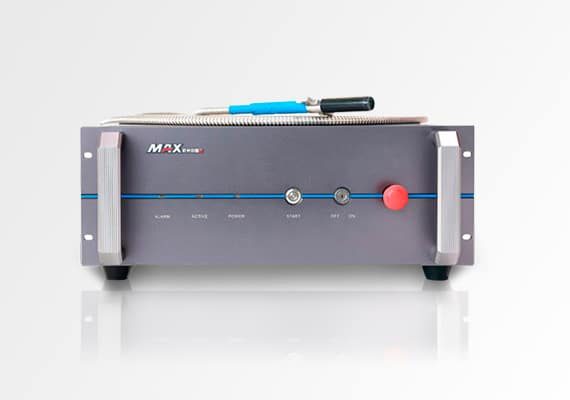
Our laser welding machines are equipped with high-quality laser generators that ensure excellent beam quality, providing small and focused spot sizes for precise and efficient welding. With power output options from 1500w to 3000w, our laser welding machines can meet a variety of welding needs, ensuring optimum productivity without compromising quality.
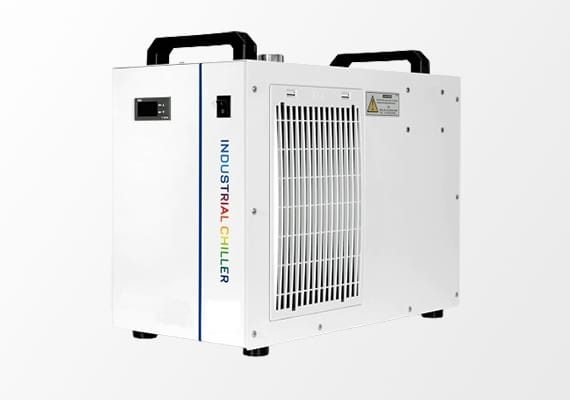
Designed with reliability in mind, our laser welding machines feature an efficient water cooling system to ensure consistent performance and extend the life of the laser generator. With advanced water cooling technology, we can guarantee stable and reliable welding results even during long-term operation.
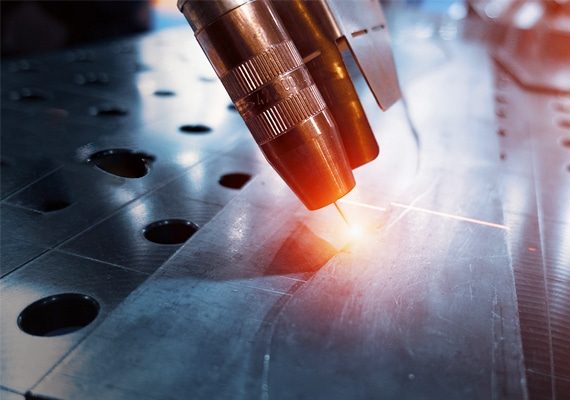
Our laser welding machines have excellent beam quality, producing a focused and precise laser spot. This feature enables high-precision and efficient welding of different materials and thicknesses, reducing spatter and minimizing the heat-affected zone.
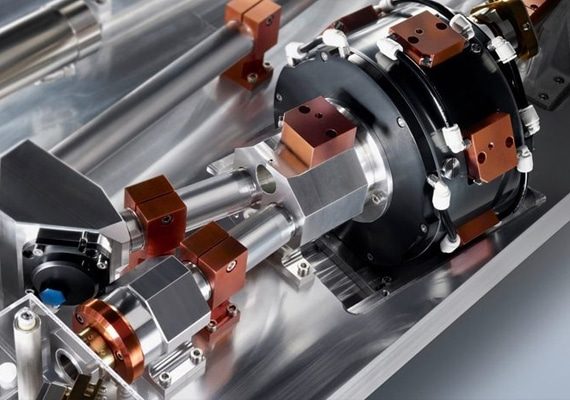
The beam delivery system of our laser welding machines utilizes flexible and flexible fiber optic cables, which can be easily integrated into automated production lines or robotic systems, enabling you to flexibly and easily adapt to different welding tasks. This flexibility increases workflow efficiency and seamlessly adapts to various manufacturing settings.
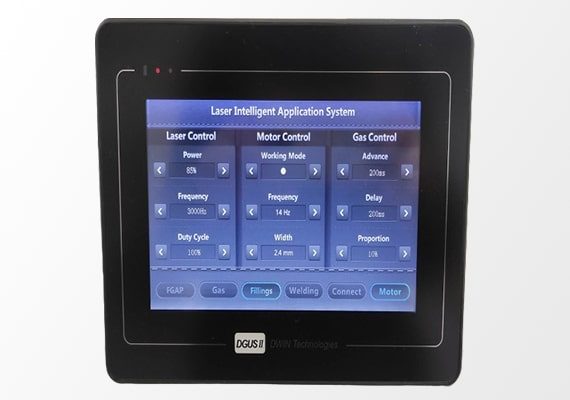
Our laser welding machines feature a user-friendly control interface that gives you complete control over your welding process. Easily adjust and program welding parameters such as power, pulse duration, welding speed, and focus position to obtain the best results for your specific welding requirements.
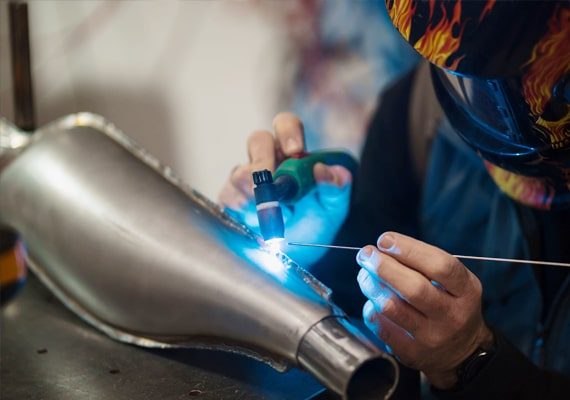
Our laser welding machines are equipped with comprehensive safety features including enclosures, interlock systems, and safety sensors. These measures protect your operators from potential exposure to the laser beam, creating a safe work environment.
| Model | AKH-1000 | AKH-1500 | AKH-2000 | AKH-3000 |
| Laser Power | 1000W | 1500W | 2000W | 3000W |
| Range of Adjustable Power | 1-100% | |||
| Laser Wavelength | 1080nm | |||
| Way of Working | Continuous/Modulation | |||
| Cooling Method | Water Cooling | |||
| Power Demand | AC220V±5%/50Hz | |||
| Working Environment Temperature | 15~35℃ | |||
| Working Environment Humidity | < 70%(No Condensation) | |||
| Laser Power (W) | Welding Form | Thickness (mm) | Welding Speed (mm/s) | Defocus Amount | Protective Gas | Blowing Method | Flow (L/min) | Welding Effect |
|---|---|---|---|---|---|---|---|---|
| 1000 | Butt Welding | 0.5 | 50~60 | -1~1 | Ar | Coaxial/Paraaxial | 5~10 | Welded Completely |
| Butt Welding | 1 | 30~40 | -1~1 | Ar | Coaxial/Paraaxial | 5~10 | Welded Completely | |
| Butt Welding | 1.5 | 20~30 | -1~1 | Ar | Coaxial/Paraaxial | -1.0 | Welded Completely | |
| 1500 | Butt Welding | 0.5 | 70~80 | -1~1 | Ar | Coaxial/Paraaxial | 5~10 | Welded Completely |
| Butt Welding | 1 | 50~60 | -1~1 | Ar | Coaxial/Paraaxial | 5~10 | Welded Completely | |
| Butt Welding | 1.5 | 30~40 | -1~1 | Ar | Coaxial/Paraaxial | 5~10 | Welded Completely | |
| Butt Welding | 2 | 20~30 | -1~1 | Ar | Coaxial/Paraaxial | 5~10 | Welded Completely | |
| 2000 | Butt Welding | 0.5 | 80~90 | -1~1 | Ar | Coaxial/Paraaxial | 5~10 | Welded Completely |
| Butt Welding | 1 | 60~70 | -1~1 | Ar | Coaxial/Paraaxial | 5~10 | Welded Completely | |
| Butt Welding | 1.5 | 40~50 | -1~1 | Ar | Coaxial/Paraaxial | 5~10 | Welded Completely | |
| Butt Welding | 2 | 30~40 | -1~1 | Ar | Coaxial/Paraaxial | 5~10 | Welded Completely | |
| Butt Welding | 3 | 20~30 | -1~1 | Ar | Coaxial/Paraaxial | 5~10 | Welded Completely | |
| 3000 | Butt Welding | 0.5 | 90~100 | -1~1 | Ar | Coaxial/Paraaxial | 5~10 | Welded Completely |
| Butt Welding | 1 | 70~80 | -1~1 | Ar | Coaxial/Paraaxial | 5~10 | Welded Completely | |
| Butt Welding | 1.5 | 60~70 | -1~1 | Ar | Coaxial/Paraaxial | 5~10 | Welded Completely | |
| Butt Welding | 2 | 50~60 | -1~1 | Ar | Coaxial/Paraaxial | 5~10 | Welded Completely | |
| Butt Welding | 3 | 40~50 | -1~1 | Ar | Coaxial/Paraaxial | 5~10 | Welded Completely | |
| Butt Welding | 4 | 30~40 | -1~1 | Ar | Coaxial/Paraaxial | 5~10 | Welded Completely |
| Aspect | Laser Welding | TIG Welding | MIG Welding |
|---|---|---|---|
| Welding Speed | Very fast welding speed | Slower than laser welding but precise and clean | Faster than TIG welding, suitable for rapid production |
| Heat Input | Low heat input | Low to medium heat input | Medium to high heat input |
| Weld Quality | Excellent weld quality with minimal distortion and defects | Excellent weld quality with low heat input, leading to less distortion | Good weld quality may require post-weld cleanup |
| Skill Required | Requires skilled operators with expertise in laser welding | Requires skilled operators with good hand-eye coordination | Easier to learn, suitable for beginners |
| Filler Material | May or may not require filler material depending on the application | Requires filler material | Requires filler wire for welding |
| Welding Atmosphere | Can be done in a vacuum or inert gas environment | Requires a shielding gas, usually argon, to protect the weld zone | Requires a shielding gas, usually argon, to protect the weld zone |
| Applications | Ideal for precision welding, micro-welding, and heat-sensitive materials | Used in a variety of applications including automotive, aerospace, and pipe welding | Versatile, used in various metal fabrication applications |
| Welding Position | Suitable for all positions | Suitable for all positions | Suitable for all positions |
| Efficiency | High welding efficiency | Medium welding efficiency | High welding efficiency |
| Cost | Generally more expensive | Moderate cost | Economical |
| Automation | Easily automated for mass production | Semi-automated and manual welding tasks | Easily automated for high-volume production |
| Welding Distortion | Minimal distortion | Minimal distortion | Moderate distortion |
| Joint Preparation | Requires precise joint preparation | Requires precise joint preparation | Can tolerate some variations in joint preparation |
| Environment and Safety | Requires precautions for laser beam exposure | Requires precautions for arc welding and UV radiation | Requires precautions for welding fumes and gas exposure |
Note: It’s important to note that the specific characteristics and outcomes of welding carbon steel can vary depending on the welding parameters, material thickness, and joint design. Additionally, the suitability of a particular welding method for carbon steel depends on the application and project requirements.
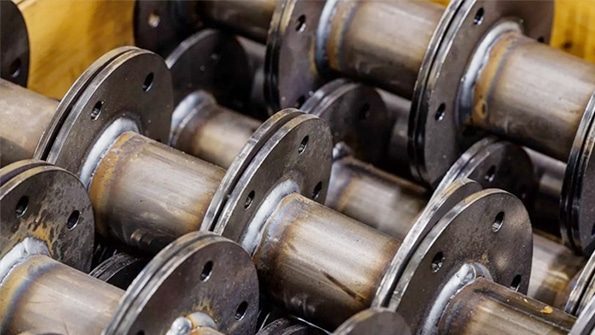
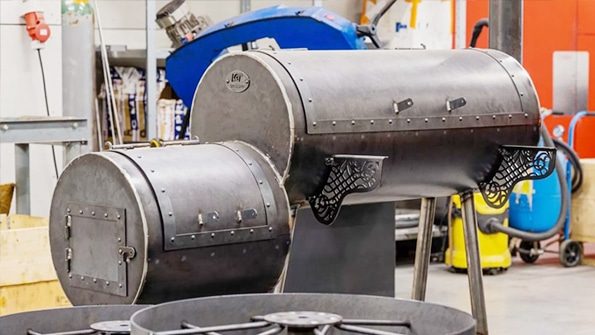
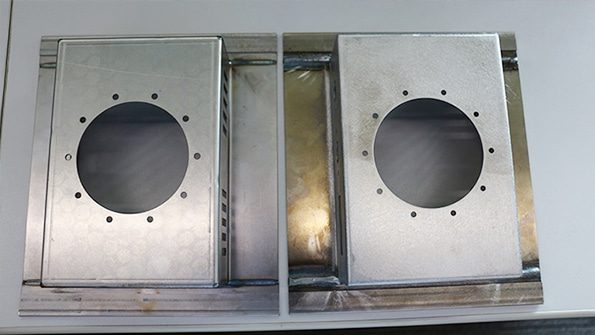
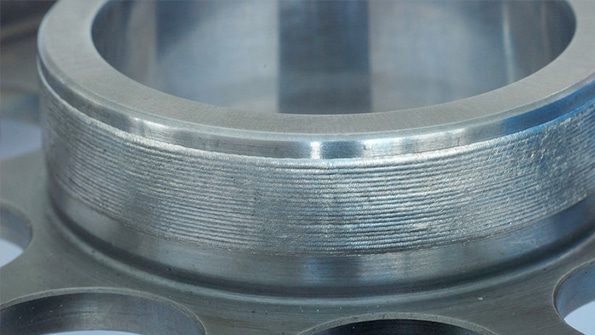
Yes, laser welding can be used to weld carbon steel. Carbon steel is one of the most commonly welded metals using laser technology. Laser welding is an efficient and widely used method of joining carbon steel components. It is especially suited for precision welding applications, producing high-quality welds with minimized distortion and defects.
During laser welding, a focused laser beam is used to heat and melt the edges of a carbon steel workpiece, and the molten metal on both sides fuses to form a strong, reliable weld. The intense energy generated by the laser beam heats the carbon steel rapidly, allowing fast welding and minimizing the heat-affected zone.
Laser welding carbon steel can provide sufficient penetration without excessive heat input. This helps minimize the heat-affected zone (HAZ) and reduces the risk of deformation or warping of surrounding materials. Additionally, laser welding can be performed in a variety of welding positions, making it suitable for a wide range of applications in automotive, aerospace, electronics, metal fabrication, and other industries. Its ability to achieve high welding speeds and its potential for automation also contribute to its popularity in industrial settings.
The cost of a carbon steel laser welding machine can vary widely based on several factors, including the machine’s output power, specifications, brand, automation features, and additional accessories. In general, laser welding machines are considered a significant investment, especially those that are automated, due to their advanced technology and precision capabilities.
The basic entry-level 1500w laser welding machine can cost between $4,500 and $15,000. The laser welding robot with automation can cost between $15,000 and $50,000, and it can handle heavy-duty welding tasks, often used in industries such as automotive, aerospace, and heavy metal fabrication. Note that the above prices are approximate and should be used as a general guide.
When investing in a laser welding machine, the specific requirements of the welding project as well as the features required must be considered. In addition, besides the purchase cost of the machine, some additional costs will be included, such as installation, training, and maintenance costs. If you want to get detailed and accurate pricing information, you can contact us directly. AccTek Laser’s engineers will provide you with a detailed quotation based on your specific requirements and budget constraints.
While laser welding carbon steel has many advantages, this welding method also has some disadvantages and challenges. The following are the main disadvantages of laser welding carbon steel:
Despite these disadvantages, laser welding remains a valuable welding method for carbon steel and offers many advantages in terms of precision, speed, and weld quality. Addressing these challenges with proper training, process optimization, and equipment selection can help maximize the benefits of laser welding carbon steel.
The thickness of carbon steel that can be effectively laser welded depends on a variety of factors, including laser power, beam quality, welding speed, and specific laser welding settings. In general, laser welding is well suited for welding thin to medium-thick carbon steel plates.
Laser welding is usually very effective for thin carbon steel plates with a thickness of 0.5mm to 4mm. Within this range, laser welding can provide precise, clean welds with minimal heat input, reducing the risk of deformation and maintaining the structural integrity of the material. The limitations of laser welding become more apparent as the thickness of carbon steel increases. For thicker carbon steel materials (typically 4mm to 10mm), laser welding may still work, but multiple welds or higher laser powers are required to achieve sufficient penetration and fusion. When the thickness of carbon steel exceeds 10mm, the efficiency and practicability of laser welding begin to decline. Welding very thick carbon steel components with lasers becomes more challenging due to the reduced conventional depth and increased heat dissipation from surrounding materials.
For extremely thick carbon steel sections beyond the capabilities of conventional laser welding, the limitations of laser welding may become more apparent. In such cases, alternative welding methods such as submerged arc welding (SAW) or arc welding processes such as gas metal arc welding (GMAW) can be used, which may be more suitable for achieving deep weld penetration and proper fusion. Additionally, when welding thicker sections, consideration of joint design, joint fit-up, and proper process parameters can help ensure a successful weld with the required quality and strength.
As laser welding continues to advance, likely, the range of carbon steel thicknesses that can be effectively laser welded will likely be expanded. But for very thick carbon steel, it is always recommended to consult a welding expert and conduct a feasibility study to determine the most suitable welding method based on specific project requirements.
In laser welding carbon steel, two main types of gases are commonly used: shielding and assist gases. These gases serve different purposes and contribute to the success of the welding process. The choice of gas depends on the specific laser welding setup and desired welding characteristics.
The choice of gas, flow rate, and specific combination of shielding and assist gases depends on factors such as material thickness, laser power, welding speed, and desired weld quality. Gas flow and nozzle design also need to be adjusted accordingly to maintain effective and consistent gas shielding during the welding process. Proper gas selection and flow control can help achieve high-quality laser welding on carbon steel and minimize any potential problems during the welding process.
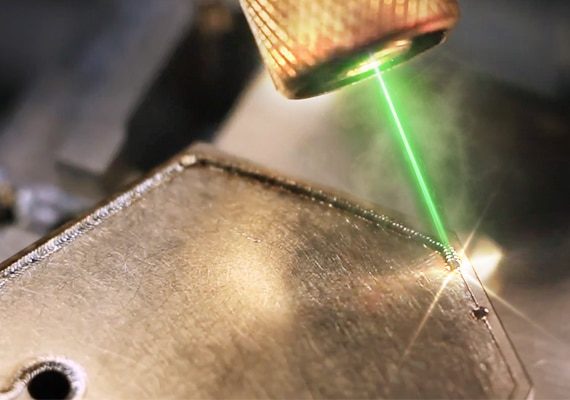
With years of experience in laser welding technology, we have honed our expertise to provide cutting-edge solutions tailored to your unique needs. Our team of skilled engineers and technicians has the in-depth knowledge to ensure you get the perfect laser welding machine for your specific application.

At AccTek Laser, we build strong relationships with our clients. Our dedicated support team provides prompt assistance and after-sales service to keep your laser welding machine running at its best for years to come. Your satisfaction is our top priority and we will help you every step of the way.

Quality is the cornerstone of our manufacturing process. Every laser welding machine is rigorously tested and adhered to strict quality control standards, ensuring that the product you receive meets the highest industry benchmarks. Our dedication to quality ensures you get a machine that performs consistently and delivers perfect welds every time.

We understand the importance of cost efficiency in today’s competitive landscape. Our laser welding machines can provide excellent value for your investment, minimizing downtime and reducing operating costs while maximizing productivity and efficiency.
4 reviews for Carbon Steel Laser Welding Machine
Selma –
Consistent performance, and minimal downtime. Enhances weld quality and productivity. Exceeds expectations.
Georgi –
Revolutionizes our welding operations. Saves time and resources. Highly recommended for industrial use.
Mateo –
Efficient and user-friendly. Perfect for various welding applications. Enhances productivity and accuracy.
Aarav –
Effortlessly handles intricate welds. Reliable performance, minimal maintenance. A must-have for welding workshops.